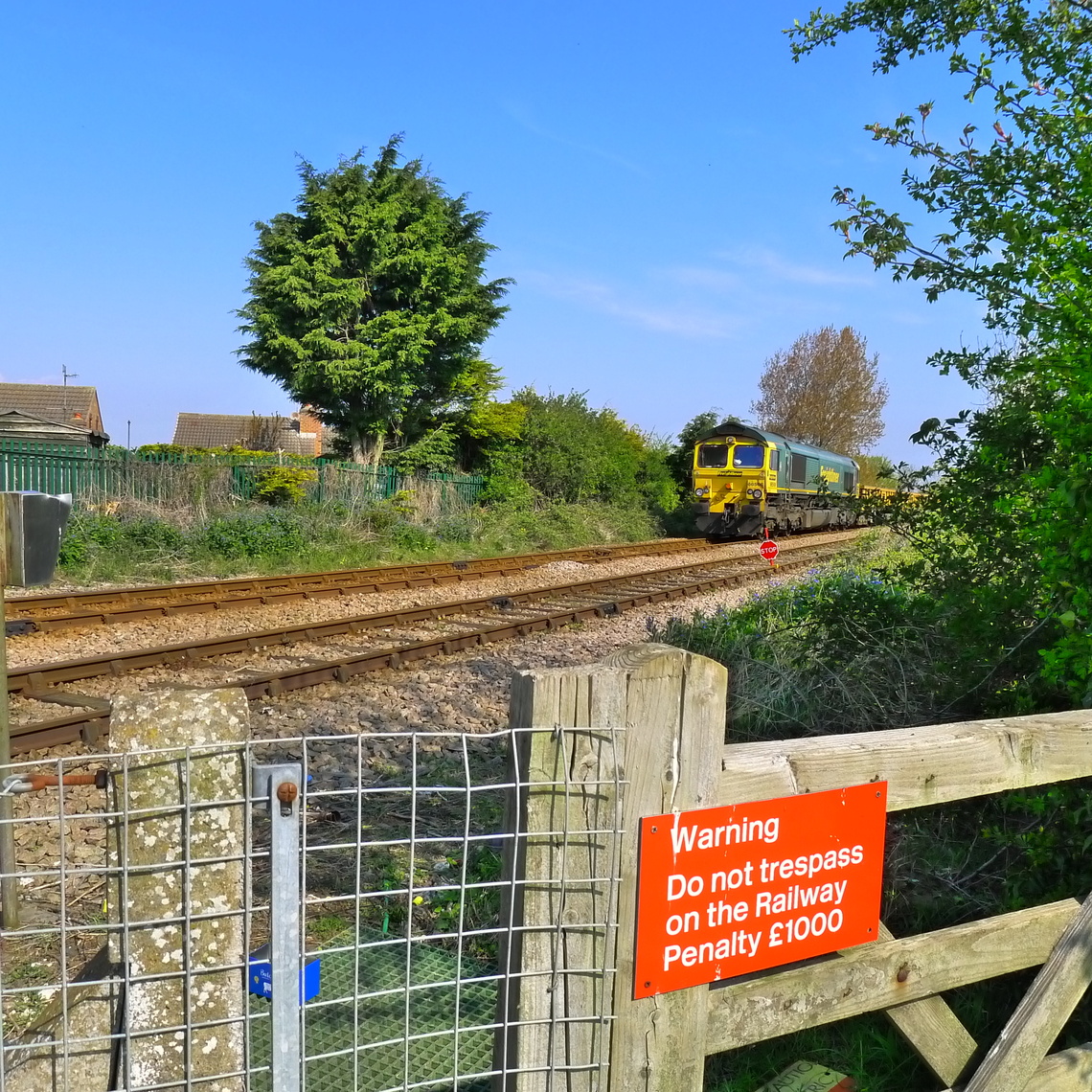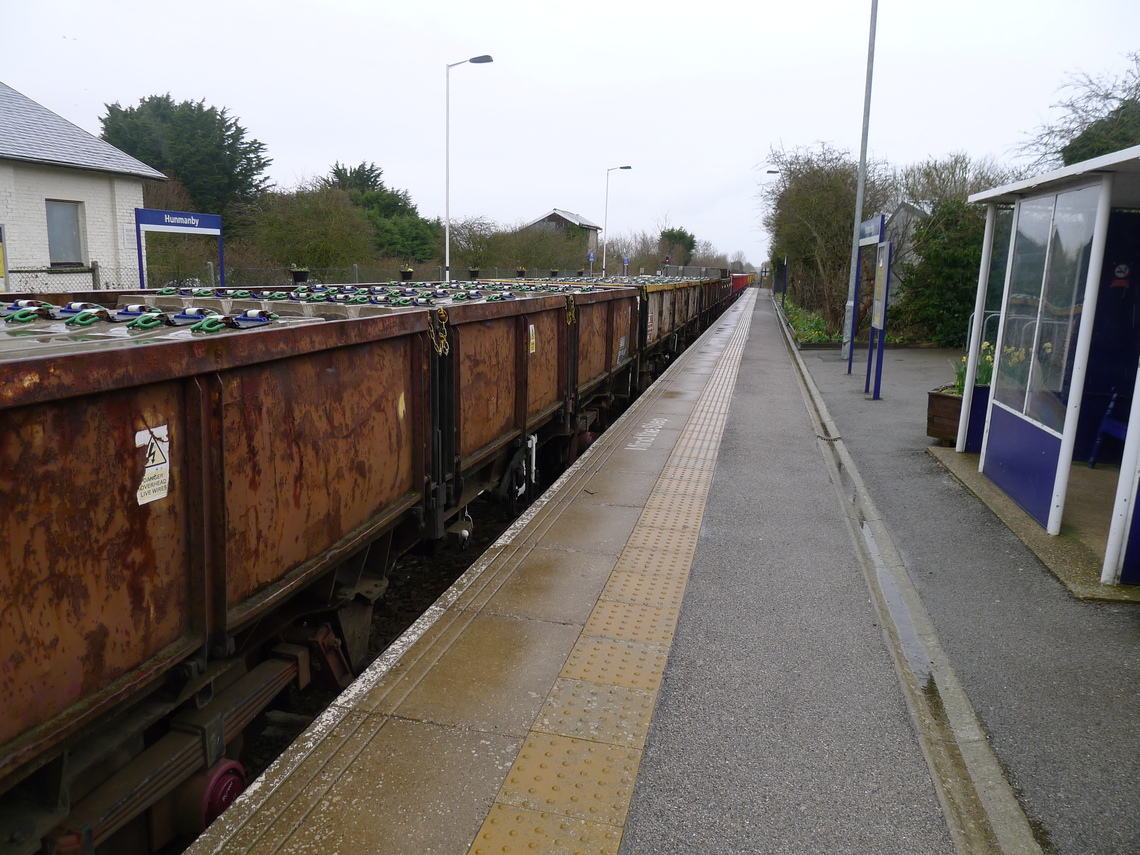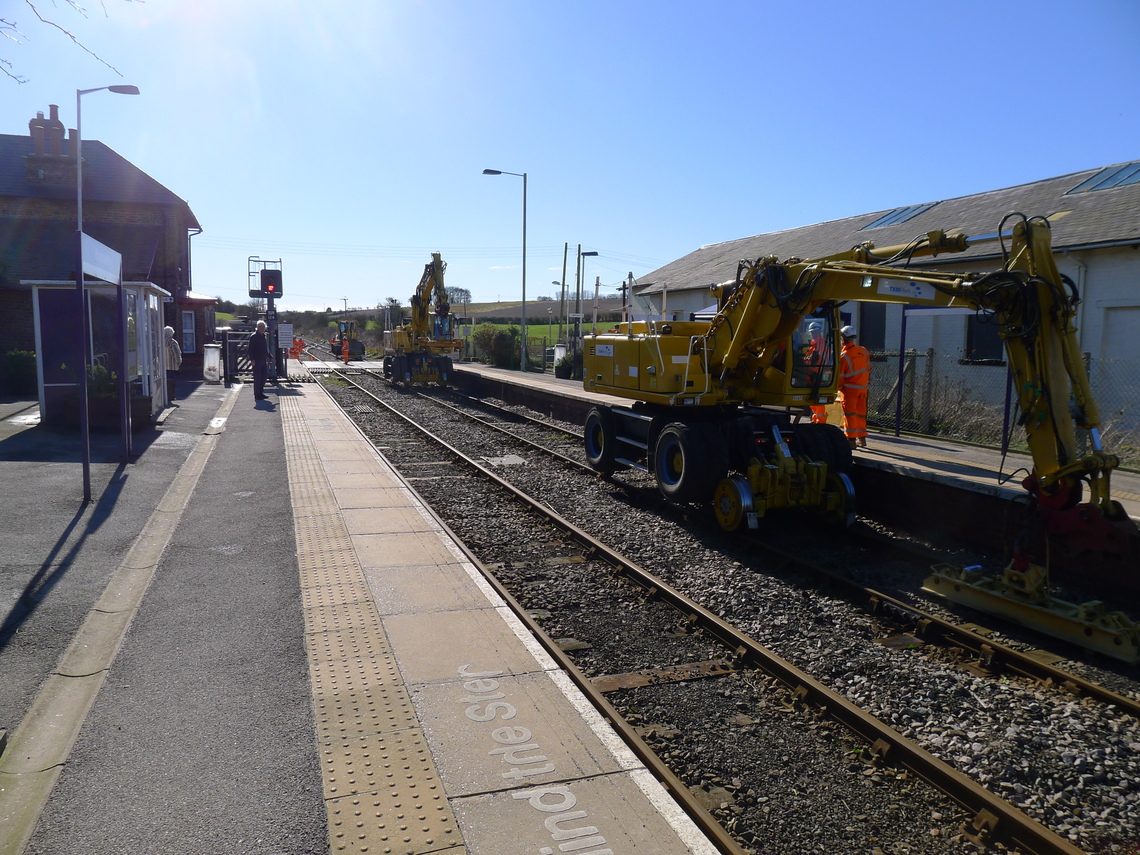Engineering Work at Hunmanby Railway Station
Major works sometimes need to take place on the local railway line.
In 2020 work has taken place on three Sundays in March and April to improve the railway track between Hunmanby and Seamer. The photograph below was taken at Sands Lane Level Crossing
When trains are not running, Network Rail engineers and their contractors can conduct work repairing or replacing railway tracks and structures, like the replacement of a bridge under or over the railway line. This is the link to Bam Nuttall replacing Filey Road Bridge in 2009
or installing a new culvert under the level crossing at the village station to improve train reliability. The nations railways are far more the trains, they are huge engineering challenges. With more people travelling on the railways than at any time in their history, huge investment replacing and upgrading old infrastructure is taking place. It is an industry that offers great job opportunities, especially for young people, training up the engineers of the future. This is the link to Network Rail Apprenticeships scheme
Network Rail plan big engineering projects over long time scales, often years in advance, the actual work on the day is often dwarfed by the logistics and planning. This is to ensure that the work is completed in time for train services to resume as planned, places often with poor or no road access. The photos are from work that took place, in 2019 at the village station. Friends of Hunmanby Railway Station helped passengers waiting for the planned replacement road transport and promoted village facilities to the contractors working on site. This included places to eat and stay. The photo below was taken at Hunmanby station showing an engineer's train full of new concrete sleepers, for replacing track between Hunmanby and Speeton.
Below, Freightliner Locomotive with the nameplate 'Stephenson Locomotive Society 1909-2009' at Hunmanby Railway Station. The huge train is full of material for replacing old railway track towards Speeton.
The site was kept tidy, despite a large workforce, with the engineering staff conducting a litter pick prior to signing off the project. Many commented how they had enjoyed their time in the local area and would like to come back for a short break as the village is so welcoming.
Railway history, at first appearances just an old rusty wagon on a train used for replacing track at Hunmanby Railway Station. But every wagon has a story. All railway vehicles have to be registered, and the details are on the rounded waggon plate below the rusted painted number. This wagon was part of lot 4014 built at the Shildon railway Works in County Durham in 1981, the year after this wagon was built the works which employed 2,600 people, 86% of the town male workforce in manufacturing was put forward for closure. A railway town, like Crewe, it had developed as the terminus for the first world first public railway to use steam locomotives in 1825. Until its closure it was the world's largest railway waggon works.
Further details from this link to Locomotion life in a booming railway town
Today Shildon is home to Locomotion. The museum officially opened in September 2004 as a partnership between Sedgefield Borough Council and the National Railway Museum, with funding from both partners and the Heritage Lottery Fund. It is home to more than 70 rail vehicles from the national collection, including icons such as Sans Pareil, APT-E and Deltic prototype.
Photograph above: A bright winters day, engineers were working on the line on the opposite side of Bridlington Street level crossing. This invvoled removing old ballast, putting down a membrane, dropping new ballast and levelling it, and laying new rail and concrete sleepers. The long railway were welded together, to give a smoother ride, replacing the old 60 foot lengths, with many of the old fittings dating from the 1940's. While the level crossing was closed to vehicles, pedestrian access was maintained. A complex operation, with limited road access, and often working in poor weather conditions.
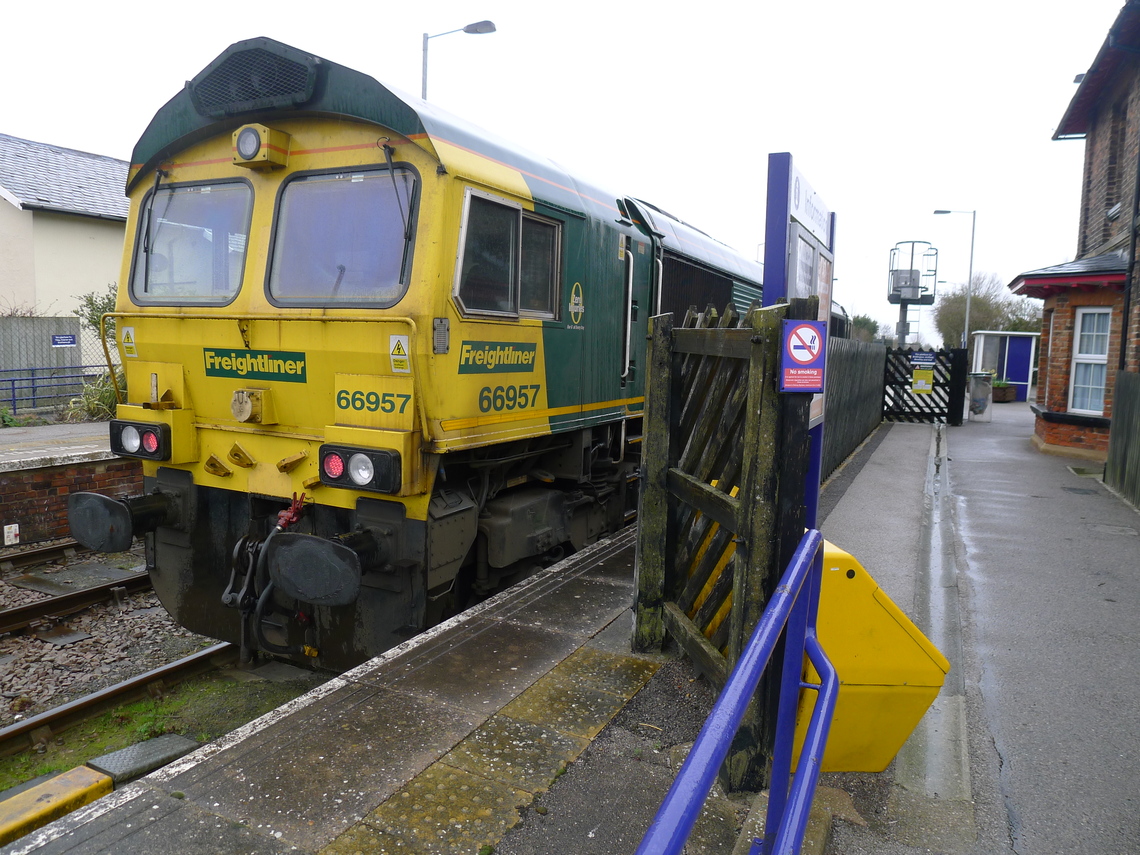
Freightliner Locomotive on a wet winters afternoon at Hunmanby Railway Station with one of the engineering trains involved in replacing old railway track between Hunmanby and Speeton.

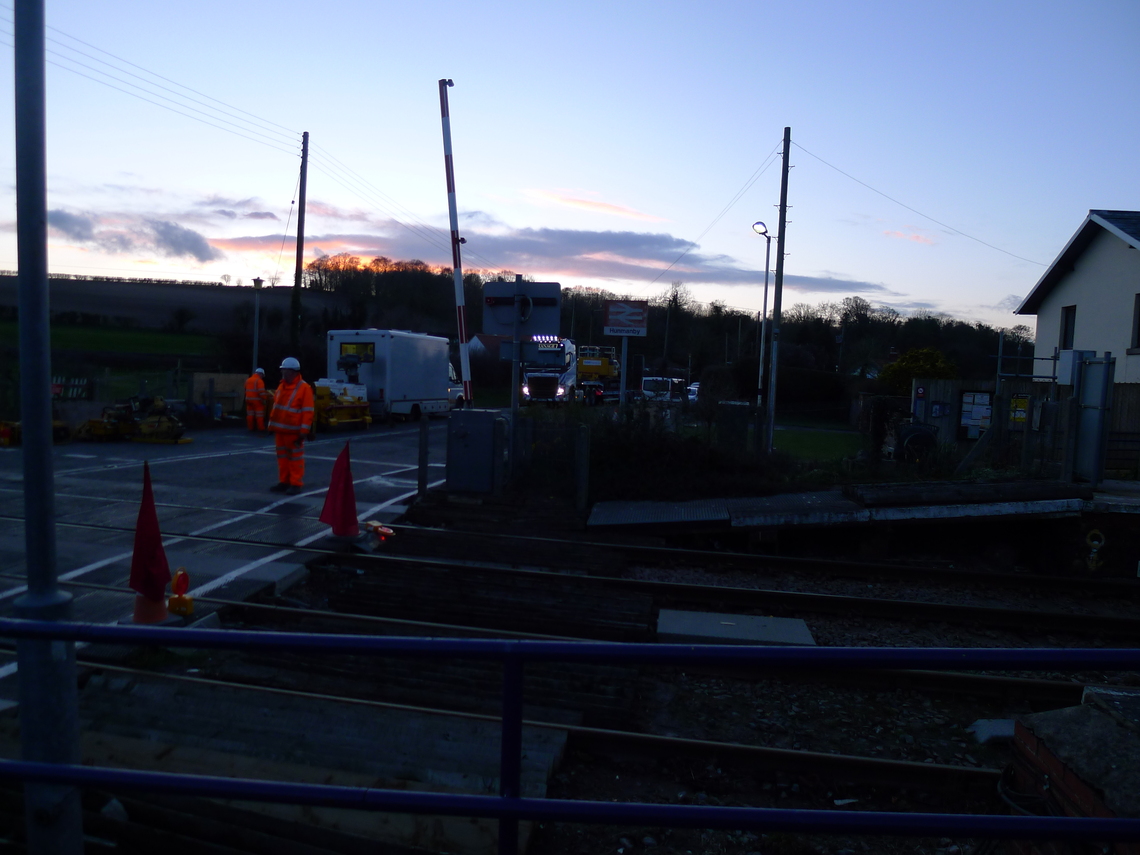
Railways rely on their engineers. Below are a couple of the challenges 'Team Orange' have faced (and overcome) in recent years
link to the Eden Valley Gorge Landslip on the world famous Settle & Carlisle Railway
link to time lapse photography from Network Rail rebuilding Dawlish Sea Wall
Network Rail offer great opportunities especially for young people, the engineers of the future
this is the link the Network Rails job opportunities in early careers and apprenticeships
Updated 20.10.2021

